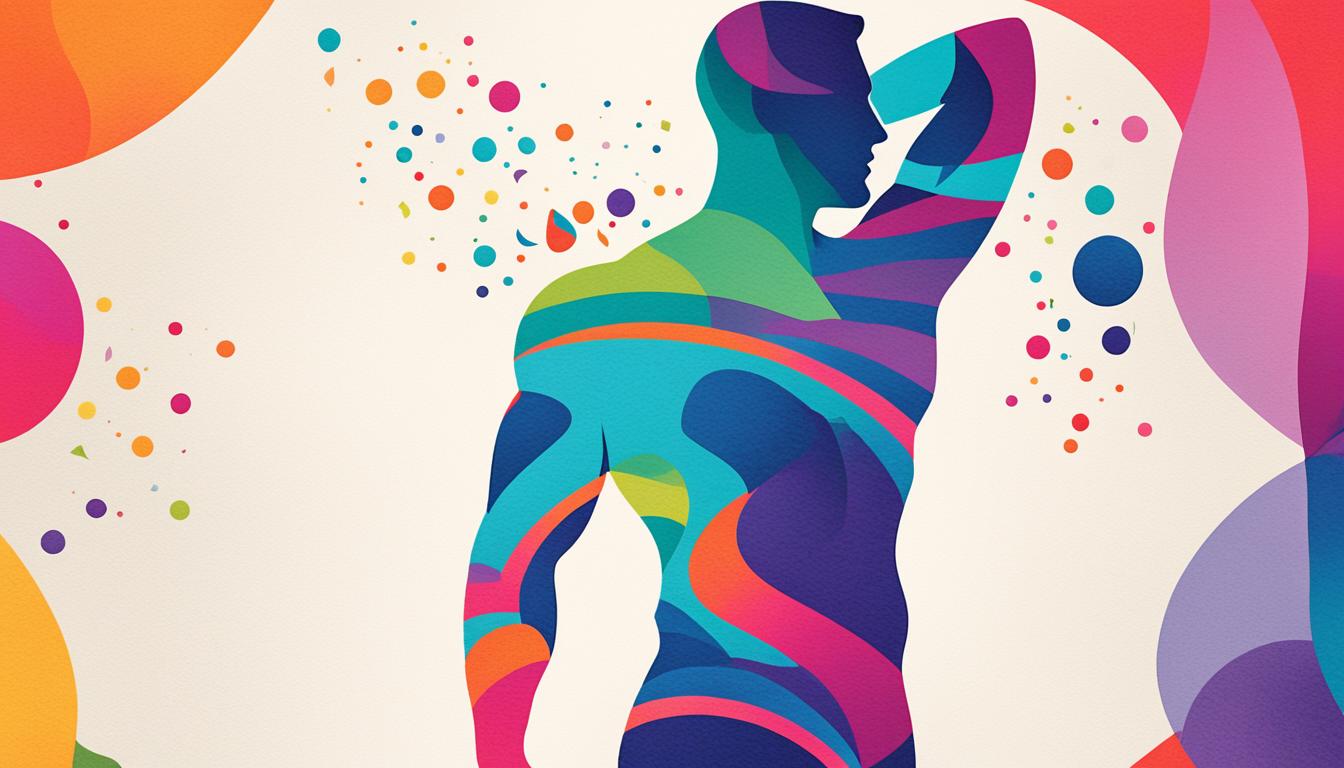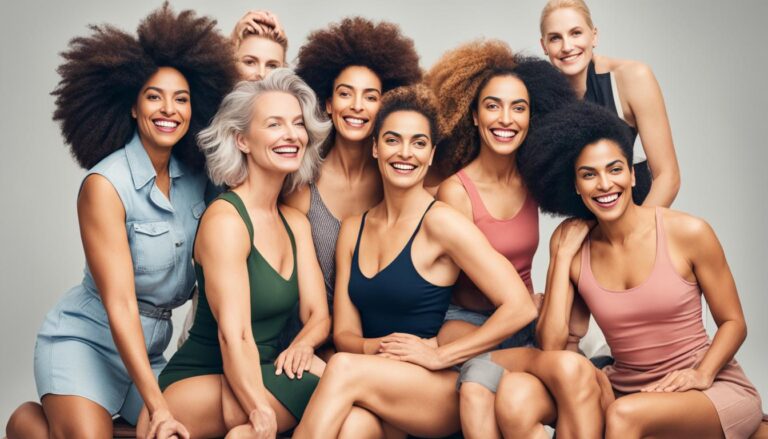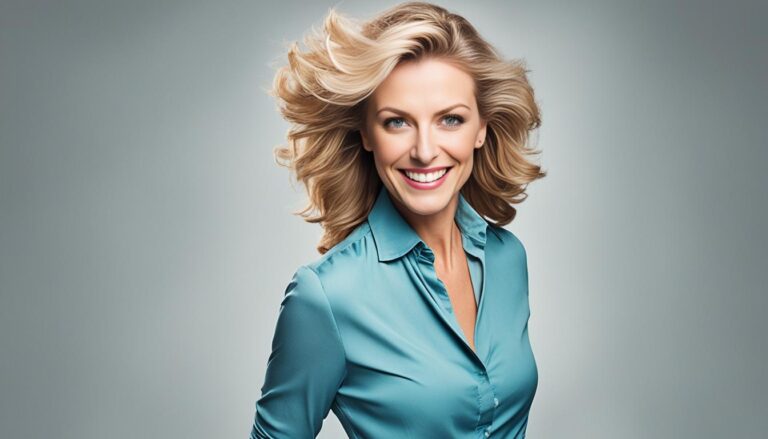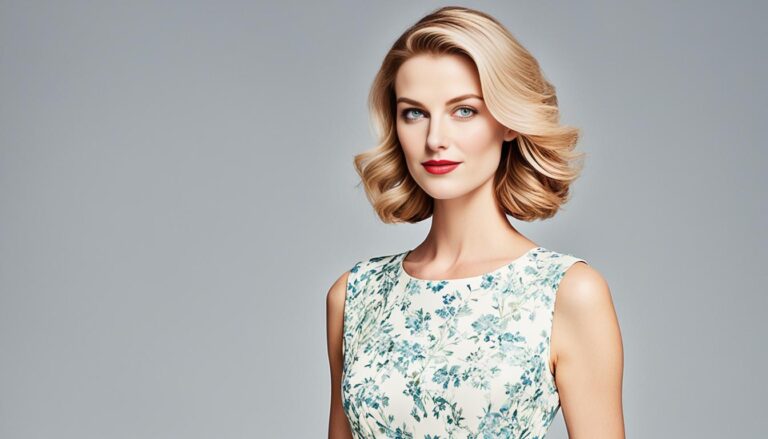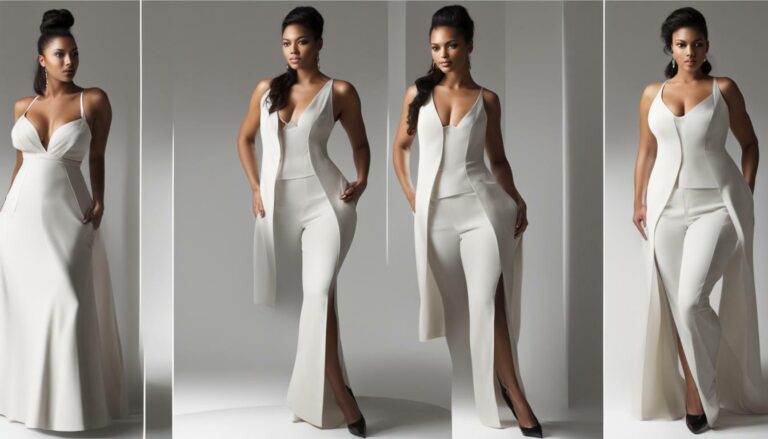Why are men attracted to women’s bodies?
When it comes to attraction, men often find themselves captivated by the physical features of women’s bodies. But what exactly drives this powerful desire? Let’s delve into the psychological factors, physical features, and men’s preferences that contribute to the male attraction to female bodies.
Key Takeaways:
- Men’s attraction to women’s bodies is influenced by both psychological and evolutionary factors.
- Research suggests that men fixate their gaze on women’s chests and waists, indicating a preference for specific physical features.
- Evolutionary reasons contribute to men’s preference for hourglass figures, which are associated with fertility and overall health.
- Social factors, such as media portrayal and cultural norms, shape societal perceptions of attractiveness.
- Individual preferences vary, highlighting the complexity of male attraction to women’s bodies.
The Evolutionary Reasons for Male Attraction
Men’s attraction to women’s bodies can be traced back to evolutionary factors. Research has consistently shown that men are typically drawn to women with hourglass figures. This preference can be explained by the association of shapely hips with fertility and overall health, making them an attractive trait in potential mates.
Across various cultures, studies have revealed that men find hourglass figures to be particularly alluring. This universal preference for curves suggests that there may be evolutionary reasons underlying men’s preferences in women’s bodies.
One possible explanation is that hourglass figures symbolize reproductive fitness and the ability to bear healthy offspring. The wider hips are associated with easier childbirth, while a narrower waist accentuates the appearance of larger breasts, both of which are indicators of fertility.
These evolutionary reasons for male attraction contribute to the enduring allure of hourglass figures in the eyes of men. It is a testament to how deeply ingrained these preferences are in our biology.
While the evolutionary reasons for male attraction are significant, it is essential to note that attractiveness is a complex and multifaceted concept shaped by a variety of factors, including societal influences and individual preferences. In the following sections, we will explore the influence of social factors on male attraction, delve into psychological studies on the subject, and discuss the rewards associated with male attraction.
The Influence of Social Factors on Male Attraction
The media plays a significant role in shaping cultural norms and influencing male attraction to women’s bodies. The constant objectification of women in the media leads to the perception of women as objects of desire. This not only affects men’s perception of attractiveness but also impacts women’s self-perception and confidence. The portrayal of women as skinny and perfect creates unrealistic beauty standards, which further perpetuates the objectification of women.
Research has shown that cultural norms and media portrayals greatly influence the way men perceive and are attracted to women’s bodies. The media often emphasizes certain body types, promoting unrealistic beauty standards that put immense pressure on women to conform. This can lead to body dissatisfaction and low self-esteem, as women compare themselves to the ideals presented in magazines, movies, and social media.
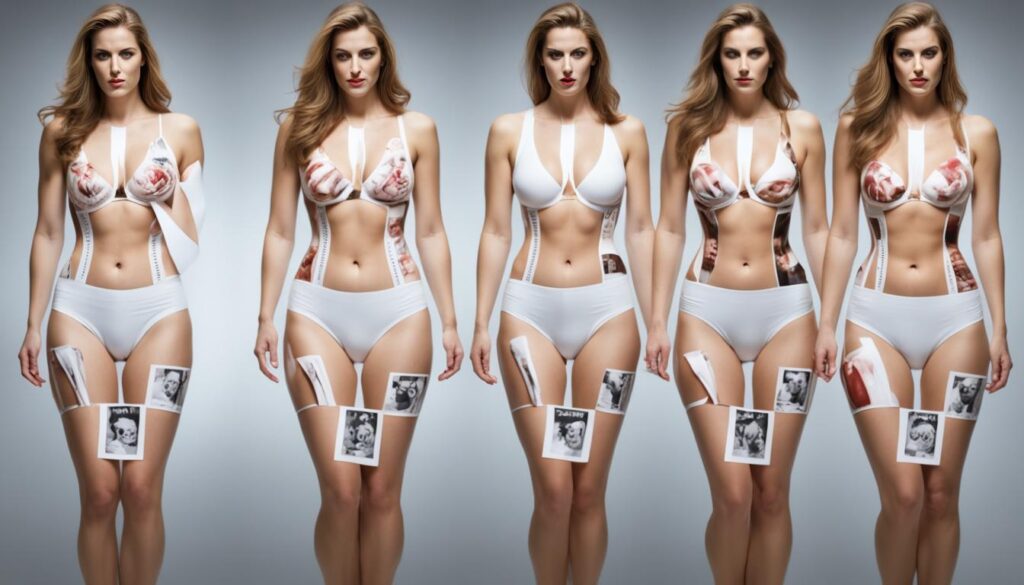
Moreover, the objectification of women in the media reduces them to their physical appearance, disregarding their intellect, achievements, and individuality. This objectification reinforces harmful stereotypes and reinforces the idea that women exist primarily for the pleasure and fulfillment of men.
“The media’s portrayal of women’s bodies as perfect and unattainable creates unrealistic beauty standards that negatively impact both men and women.” – Anonymous
In addition to the media, cultural norms also play a significant role in shaping societal perceptions of attractiveness. People are influenced by their environment, including family, social circles, and wider cultural beliefs. Cultural norms dictate what is considered attractive and can vary greatly across different societies and time periods.
Cultural Norms and Beauty Ideals
Cultural norms regarding beauty and attraction are often deeply ingrained and can influence individual preferences. For example, in some cultures, a particular body shape or skin tone may be considered more desirable than others. These cultural norms can contribute to the objectification of women’s bodies, as individuals strive to fit into the ideals set by their society.
Redefining Beauty Standards
However, it is important to recognize that beauty comes in many forms, and there is no one-size-fits-all standard of attractiveness. Efforts are being made to challenge societal beauty norms and promote body positivity. Brands and influencers are embracing diversity, featuring a wider range of body types and celebrating uniqueness. This shift towards inclusivity helps to counteract the harmful effects of media objectification and encourages individuals to embrace their own beauty, regardless of societal expectations.
Psychological Studies on Male Attraction
Recent psychological studies have delved into the fascinating realm of male attraction to women’s bodies, employing advanced eye-tracking technology to gain unprecedented insights. These studies have revealed intriguing patterns in men’s gaze when observing women’s bodies, shedding light on the psychological factors at play. Surprisingly, these studies have also uncovered similar gaze patterns among women when viewing other women, suggesting a wider cultural phenomenon.
Using eye-tracking technology, researchers have observed that men’s gaze tends to concentrate more on women’s chests and waists rather than their faces. This finding supports the notion that particular physical features of women’s bodies, especially the curves and contours of their torsos, hold significant appeal for men. By uncovering these gaze patterns, these studies provide valuable evidence of the objectification of women’s bodies, not only among men but also among women themselves.
The use of eye-tracking technology has allowed researchers to measure and quantify the extent of men’s gaze on women’s bodies, providing objective data to support the long-recognized phenomenon of male attraction. These findings have profound implications for understanding human behavior in the context of romantic and sexual attraction, opening up avenues for further exploration and research.
It is intriguing to see how our gaze patterns reveal the cultural influence on male attraction and the objectification of women’s bodies. These psychological studies using eye-tracking technology bring to light the complex dynamics at play in our perceptions of attractiveness.
Women’s Gaze on Other Women’s Bodies
Interestingly, these studies have also examined women’s gaze when viewing other women’s bodies. The findings show that women exhibit similar gaze patterns to men, focusing more on the chests and waists of other women. This suggests that objectification of women’s bodies is not exclusive to men but is deeply ingrained in our culture and societal expectations.
The parallel findings between men and women challenge the common belief that objectification solely stems from the male gaze. It highlights the need to address and reshape societal norms and beauty standards that perpetuate the objectification of women and reinforce harmful ideals of attractiveness.
Implications and Future Research
These psychological studies employing eye-tracking technology provide valuable insights into the complexities of male attraction to women’s bodies. By revealing gaze patterns and the cultural aspects of attraction, these studies prompt a deeper understanding of the psychological and societal factors that shape our perceptions of beauty.
Future research in this field may delve deeper into gender differences in gaze patterns and the impact of cultural influences on attraction. Additionally, exploring how individuals’ gaze patterns may change when presented with diverse body types could provide further understanding of the intricacies of attraction.
The Rewards of Male Attraction
In recent years, brain scans have provided valuable insights into the rewards associated with male attraction to women’s bodies. These scans reveal the activation of specific brain regions that are associated with reward and pleasure when men are exposed to visual stimuli featuring women with shapelier hips.
Studies have shown that the brain’s reward centers are stimulated in a manner similar to the effects of alcohol or drugs when men view images of attractive women. This suggests that male attraction to the female form can be a rewarding experience in itself.
These findings may also help shed light on the link between male attraction and pornography addiction. The visually stimulating nature of pornography, particularly the depiction of attractive bodies, can activate the same reward centers in the brain. This can lead to a preoccupation with pornography and potentially contribute to addiction-like behaviors.
Further research is needed to fully understand how male attraction affects the brain and the potential consequences of excessive exposure to visual stimuli. It is essential to recognize that healthy human sexuality involves a complex interplay of biological, psychological, and social factors. By gaining a deeper understanding of the rewards associated with male attraction, we can continue to explore and address the impacts it has on individuals and society as a whole.
Men’s Perspectives on Different Body Parts
To gain insight into men’s perspectives on women’s bodies, I collected anonymous quotes from real men. These quotes reveal that different men have varying preferences when it comes to specific body parts.
“I find women’s eyelashes and eyes incredibly attractive. They have this mesmerizing quality that can convey honesty and passion.” – Alex
“For me, lips are a source of sensuality. There’s something about soft, full lips that is undeniably captivating.” – Michael
“I’m drawn to the back of a woman’s ribs or the delicate curve of her neck. It’s intimate and vulnerable, which adds to the overall allure.” – Ryan
These diverse perspectives highlight the individuality of attraction and the complexity of male preferences. Men’s perspectives on women’s body parts can vary greatly, with some finding beauty in the expressive nature of eyes, others in the sensuality of lips, and some drawn to the vulnerability and intimacy associated with specific areas of the body.
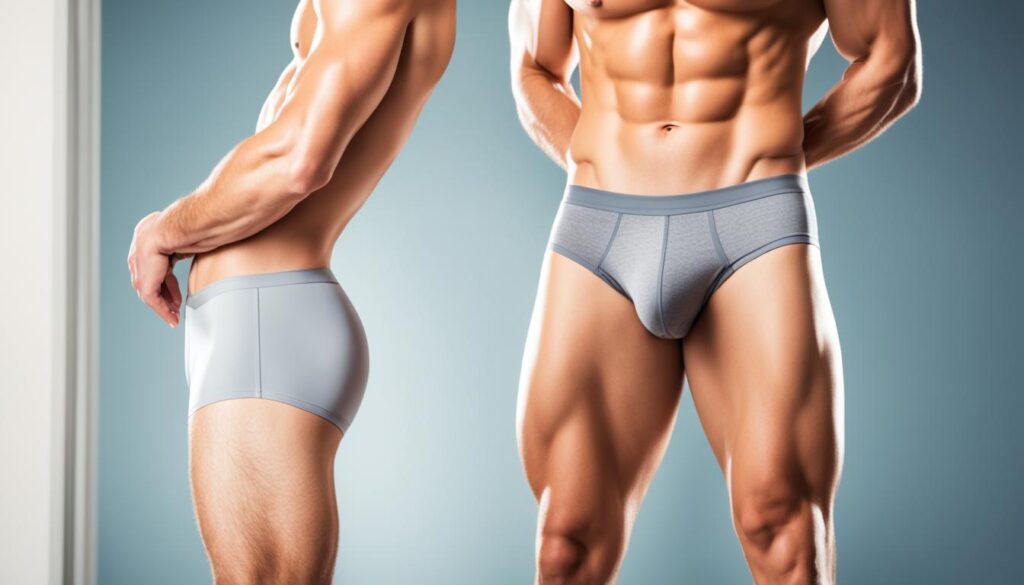
Men’s attraction to women’s bodies is a complex topic with no one-size-fits-all answer. Individual preferences play a significant role in shaping attraction, with some men gravitating towards certain facial features while others focus on different body parts. Understanding and appreciating these diverse perspectives can help foster a greater appreciation for the uniqueness of human attraction.
Conclusion
In conclusion, the attraction that men feel towards women’s bodies is influenced by a variety of factors, including psychological, evolutionary, and societal influences. Psychological studies have shown that both men and women have a tendency to focus their gaze on specific physical features of women’s bodies, such as the chest and waist. This indicates that there are innate psychological factors at play in male attraction.
Evolutionary factors also contribute to men’s preferences for certain physical attributes in women’s bodies. For example, hourglass figures, characterized by shapely hips, are believed to be attractive to men due to their association with fertility and overall health. This preference can be traced back to our evolutionary history as a way for men to identify potential reproductive partners.
Additionally, societal influences, such as the media’s portrayal and objectification of women’s bodies, play a significant role in shaping societal perceptions of attractiveness. The constant exposure to images of women with unrealistic beauty standards can influence men’s perception of what is considered attractive. Moreover, individual preferences in male attraction to women’s bodies vary widely, highlighting the complex and multifaceted nature of attraction.
In summary, the attraction that men feel towards women’s bodies is a result of a combination of psychological, evolutionary, and societal factors. Understanding these influences can help shed light on the complexities of attraction and provide insights into the dynamics between men and women in contemporary society.
FAQ
Why are men attracted to women’s bodies?
Men are attracted to women’s bodies due to a combination of psychological, evolutionary, and social factors. Psychological studies have shown that both men and women focus their gaze more on specific physical features of women’s bodies. Evolutionary factors play a role in men’s preference for hourglass figures, which are associated with fertility and overall health. Furthermore, social influences, including the media’s objectification of women and cultural norms, shape societal perceptions of attractiveness. Individual preferences may vary, as attraction is complex and multifaceted.
What are the evolutionary reasons for male attraction?
Evolutionary factors contribute to male attraction to women’s bodies. Shapely hips in women are associated with fertility and overall health, making them attractive to men. Studies across cultures have consistently found that men find hourglass figures to be sexy. This preference can be explained by the evolutionary desire to select a partner who is likely to produce healthy offspring. Men’s preferences in women’s bodies are influenced by these evolutionary reasons.
How do social factors influence male attraction?
Social factors, such as cultural norms and the media portrayal of women’s bodies, significantly influence male attraction. The constant objectification of women in the media leads to the perception of women as objects of desire. This affects men’s perception of attractiveness and impacts women’s self-perception and confidence. The media’s portrayal of women as skinny and perfect creates unrealistic beauty standards, which further perpetuate the objectification of women. These social influences shape societal perceptions of attractiveness and influence male attraction to women’s bodies.
What do psychological studies reveal about male attraction?
Psychological studies utilizing eye-tracking technology have found that both men and women fixate their gaze more on women’s chests and waists rather than their faces. This indicates that the objectification of women’s bodies is a cultural phenomenon that affects both men and women. These studies provide insights into the patterns of male attraction and highlight the impact of social and cultural factors on visual preferences.
What are the rewards of male attraction?
Brain scans of men who were shown images of women with shapelier hips revealed that certain regions of the brain associated with rewards were activated. This suggests that male attraction to women’s bodies can be rewarding, similar to the effects of alcohol or drugs. These findings may help explain the preoccupation some men have with pornography, as attractive bodies can stimulate the reward centers in the brain. Further research is needed to explore the effects of male attraction on the female brain.
What do men think about different body parts?
Men’s perspectives on women’s body parts can vary. Some find eyelashes and eyes attractive due to their emotive qualities and ability to convey honesty and passion. Others appreciate lips for their sensuality, while some are drawn to the back of the ribs or the neck for their intimacy and vulnerability. These diverse perspectives highlight the individuality of attraction and the complexity of male preferences.
What is the conclusion regarding male attraction to women’s bodies?
Men’s attraction to women’s bodies is influenced by a combination of psychological, evolutionary, and social factors. Psychological studies have shown that both men and women focus their gaze more on specific physical features of women’s bodies. Evolutionary factors play a role in men’s preference for hourglass figures, which are associated with fertility and overall health. Furthermore, social influences, including the media’s objectification of women and cultural norms, shape societal perceptions of attractiveness. Individual preferences may vary, as attraction is complex and multifaceted.
